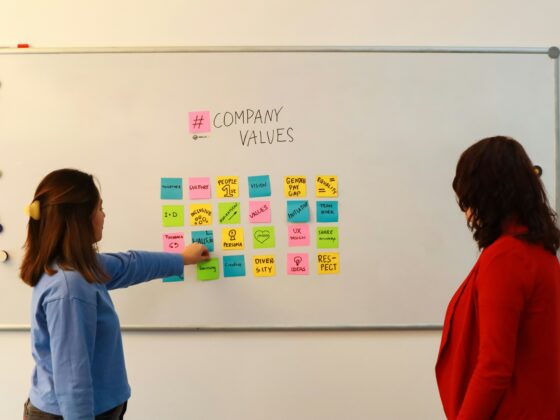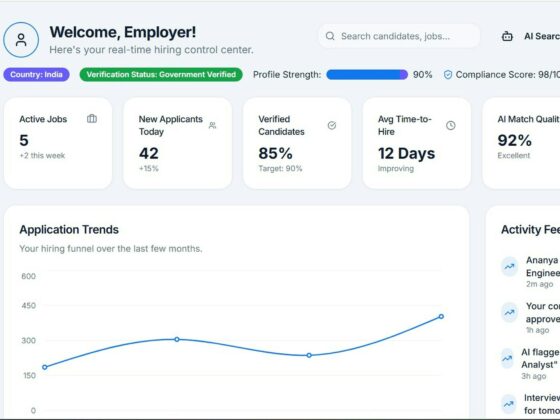
In today’s digital-first world your website is the gateway to your business. In the travel industry, it should be a focal point for inspiring and converting potential customers.
As your agency or tour operator business evolves, so should your online presence. A well-maintained, user-friendly website not only builds trust but also showcases your unique experiences and services. If you’re considering a refresh or complete overhaul, here are eight reasons why an upgrade could make all the difference in attracting and retaining clients.
1. Your website isn’t mobile first
Mobile users are likely to make up more than half of your website traffic, so it’s important to create the best user experience for both mobile and desktop. This doesn’t simply mean that if your website runs on a phone, everything is fine – it’s got to be ‘mobile first’, especially as potential customers increasingly use mobile to research destinations, book trips and compare prices while on the go.
Google takes the mobile version of your website into consideration for indexing and ranking pages, called mobile-first indexing. When designing content for the mobile-first index, you need to think about what users are seeing on their phone, considering the content usability and visibility, while taking core web vitals, site performance and page experience into account.
2. Your design doesn’t reflect the business
Never judge a book by its cover… unless we’re talking about web page design. There are a few questions to ask yourself when it comes to whether your website design reflects the business, or if it’s out of date:
- Are your brand identity, services and products being well conveyed?
- Have you rebranded and not yet updated your website?
- Has your audience moved or changed?
- Have your competitors got better looking websites?
- Have you got market intel that tells you that your conversion rates are behind the time?
It’s possible that with a little TLC you can change the templates or content of your existing site, but often it can be more work and effort than you expect – and a website rebuild is the best answer.
3. Your website doesn’t and can’t rank with Google
Google is by far the most popular search engine, with an overwhelming 94% UK market share, so your website needs to be tailored accordingly. Here are a few reasons you might be struggling to rank:
- Poor tech: Badly built, slow webpages will be slow to be indexed, if at all. Excessive use of Javascript can make this a big issue.
- Poor code: Templated websites like Hubspot and WordPress can create huge web pages; excessively long pages can create issues with indexing and longer load times.
- Poor page management: Some CMS will handle redirects automatically, creating long redirect chains that cause search robots to lose interest and waste budget.
4. Your CMS is out of licence
When was the last time you checked your CMS version and licence? As time goes on, tech may be ditched or forced to be upgraded, leaving website owners with a choice between updating the CMS and paying for the privilege, continuing with an out-of-date and potentially insecure CMS, or moving platforms. A modern CMS is crucial for managing your destination content, itineraries and promotions efficiently. Bear in mind many of the well-known CMS offerings are often overpriced and not worth the money you pay for them – so go open source.
5. Your website is slow
You’d be hard pressed to find anybody more impatient than someone waiting to access a web page. The number one reason for a visitor to leave a website is due to slow loading times. A little bit can go a long way here, so if you feel like your website needs old code looked at or server tweaks, it might make a difference.
6. Your website has bad UX
A good user experience is extremely important for website performance, so what is it that users really want? Answer: to easily find what they are looking for. Bad UX and templates that steer users down dead ends and lead them in circles affects session duration and whether they’ll want to come back again, so think about how easy it is for users to interact with your web pages and complete their tasks.
7. Your website is inefficient
When time is money, efficiency is everything. Old websites can have bottlenecks that create issues which are hard to fix without starting fresh or upgrading. For example, choosing the wrong tech stack can lead to forms not getting pushed through to CRMs, so what happens next? Someone must manually enter information into another system, wasting time and money. A new website would address basic issues like replacing poor data structures that can’t be changed and, in this situation, you would spend a little to save a lot in the long run.
8. You’ve built (web) Frankenstein
It’s wonderful seeing your website grow, adding more functionality – but take a step back and look at the bigger picture. If your website is strung together with a patchwork of plugins and custom CSS, it might be time to let it go. Software updates from an amalgamation of plugins and code can cause compatibility issues, so rebuilding your site might be necessary.
Final thoughts
Ultimately, a bad website costs money through lost sales and bookings to competitors with better sites. Focussing on improving certain aspects of your website or creating a new one will hopefully improve your conversion rate, SERP (search engine results page) ranking and be worth the cost. For the longevity of your business, take into consideration when it may be time to upgrade or invest in a new website.







